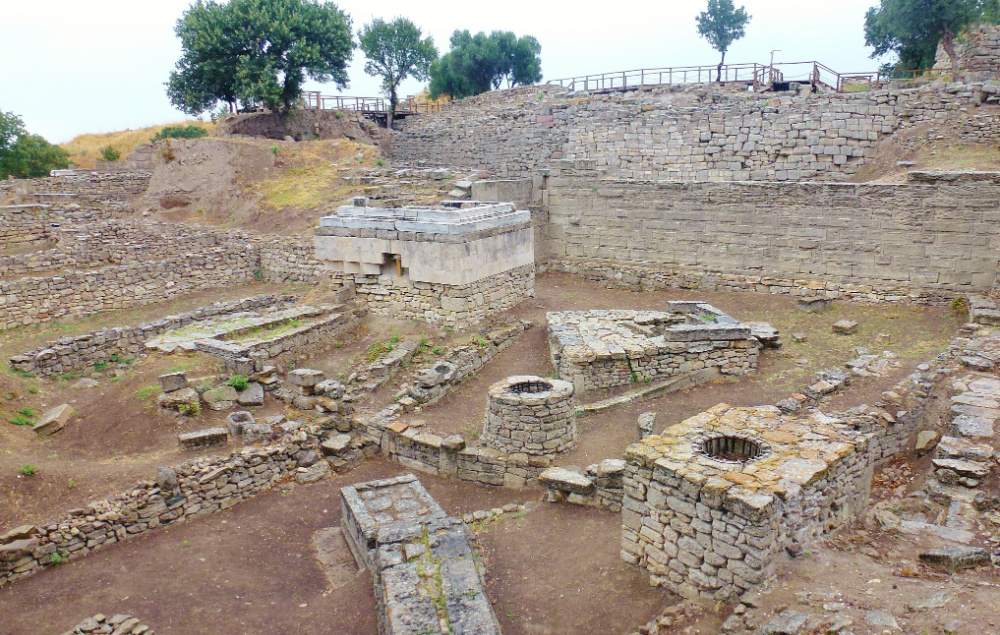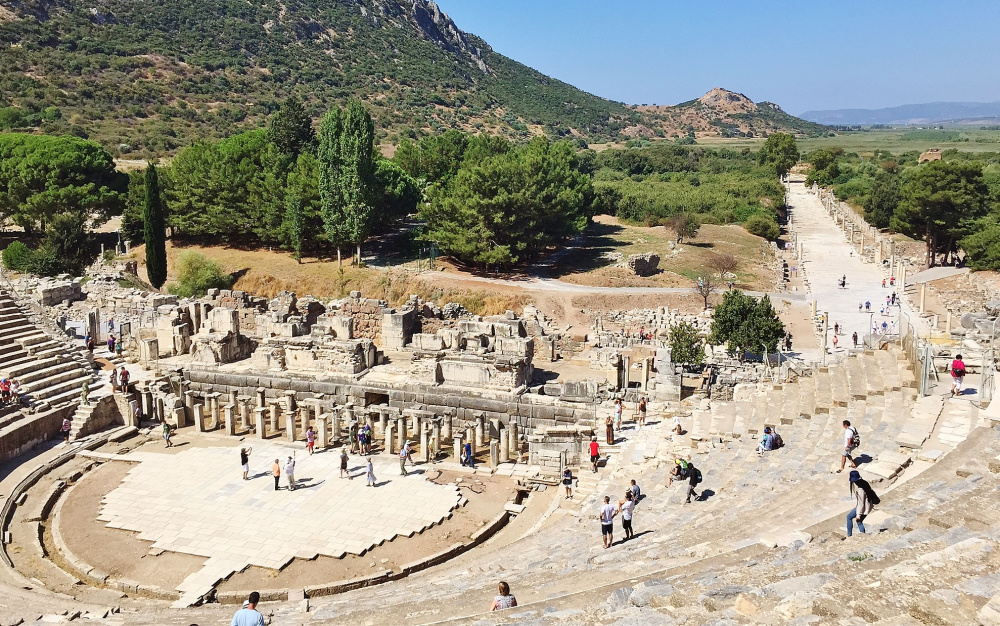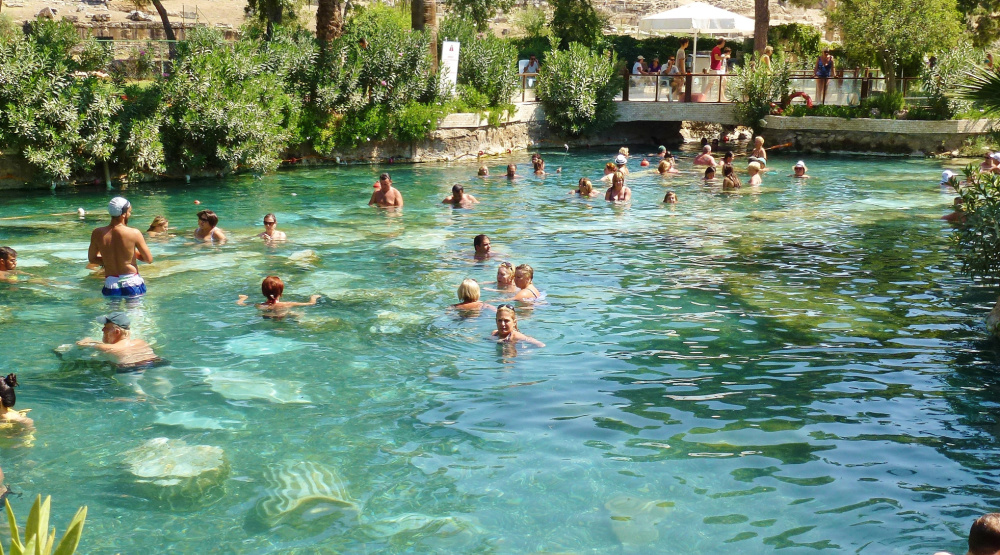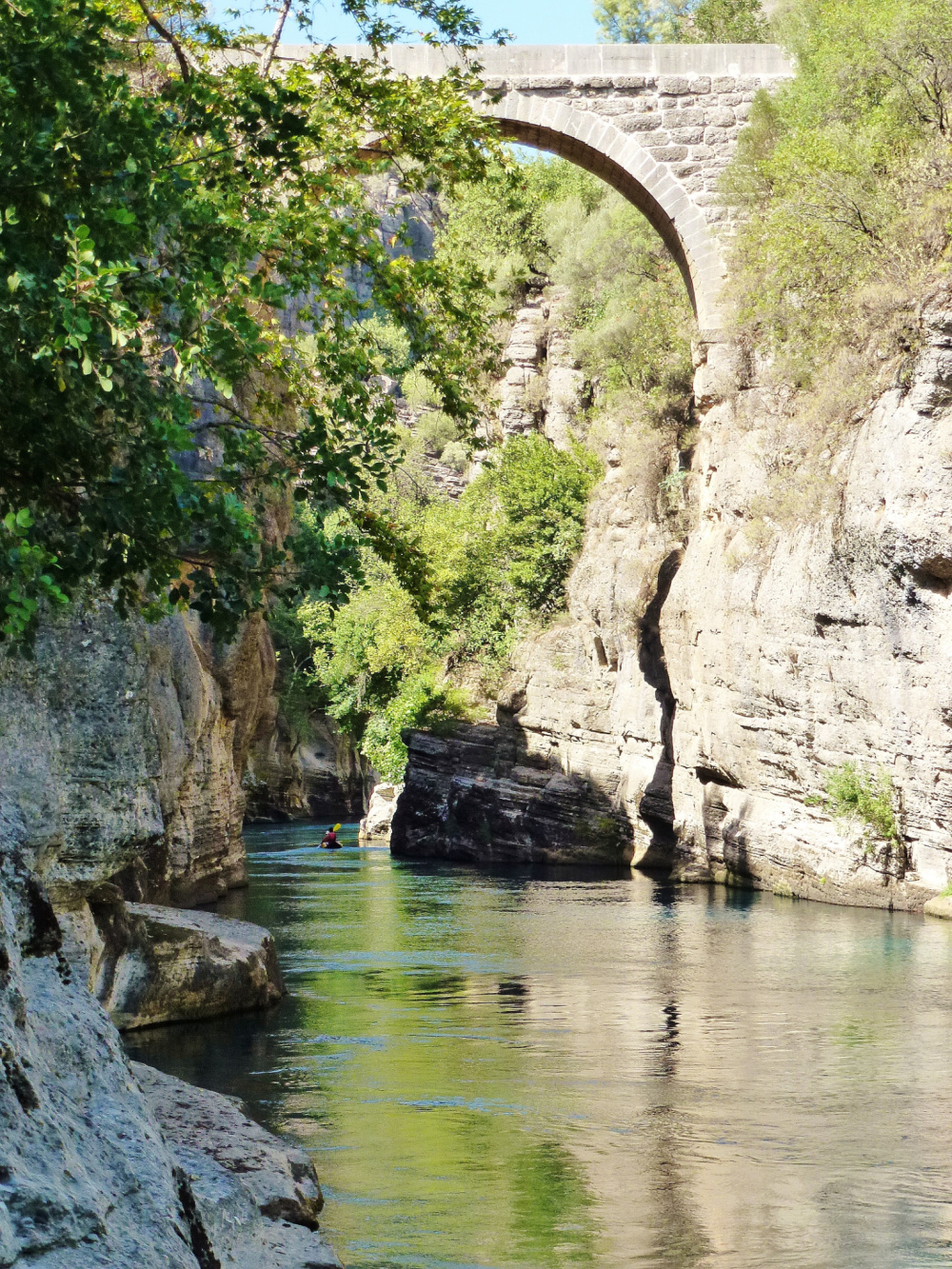
On this leg of our coach tour of Turkey we were off to visit the ruins of Troy, the city of Homeric legend and the epic battle between the Greeks and the Trojans. Not far from the city of Çanakkale, the ancient city of Troy (Ilios) dates from about 3,000 years BC and was a thriving mercantile centre on the Dardanelles. Now, after centuries of silting up of the bay and its river mouth, the site is about 5 kilometre inland.

Serious excavation of the site began under businessman and archaeologist Heinrich Schliemann in 1866. He found a series of cities layered upon each other, dating from the Bronze Age to the Roman period. Early excavation techniques were not as careful as they are now and much of the evidence has been confused. It is now thought that Homer’s Troy existed from about 1250BC to 1184BC, indicated by signs of fire and battle in the ruins. The archaeological site of Troy was added to the UNESCO World Heritage list in 1998. The best preserved feature is the small Roman theatre (Odeon) which was one of the later additions and was renovated under the Emperor Hadrian in 124 AD. And although it is terribly touristic, we could not leave without clambering up into the Wooden Horse – a recreation of the gift horse in Homer’s tale, The Iliad.
In the afternoon, under a blazing sun, we visited the ancient Greek and Roman ruins at Pergamon, north-west of the modern day city of Bergama in Izmir province. The site covers an enormous area from the upper Acropolis down to a lower Acropolis and nearly three kilometres away, the Sanctuary of Asclepius. Although the city dates from the time of the ancient Achaean Greeks, it flourished under Roman rule and, under Emperor Hadrian (117 – 138), temples, a stadium, a theatre, a huge forum and an amphitheatre were constructed. The shrine to Asclepius (the god of healing) was expanded into a lavish spa. This sanctuary grew in fame and was considered one of the most famous therapeutic and healing centres of the Roman world. Pergamon was also a flourishing centre for the production of parchment, and the library there was believed to contain 200,000 volumes, second only in the ancient Greek world to that of Alexandria.

We only had time to cover the Sanctuary, or Asclepion, which was approached along an 820 metre colonnaded sacred way – the Via Tecta. In this place people with health problems could bathe in the water of the sacred spring, and in the patients’ dreams Asclepius (according to the tale) would appear in a vision to tell them how to cure their illness. Galen, the most famous doctor in the ancient Roman Empire, was born at Pergamon and worked at the Asclepion for many years. Remains are still visible of the temple of Asclepius, the treatment centre and an underground passageway.
Our hotel that night was in the seaside city of Izmir – the jumping off point for many tourists to the glories of the fantastic UNESCO World Heritage site of Ephesus (Efes). Over many centuries Ephesus was ruled by many different peoples until the Romans, under whom it was second only to Rome in size and importance.

The city was famed for the Temple of Artemis (Diana), the Library of Celsus, and a Theatre which was capable of holding 25,000 spectators. Believed to have been the largest outdoor theatre in the ancient world, it was used initially for plays but later for gladiatorial competitions. In fact we found a gladiators’ cemetery within the complex. Ephesus contains the largest collection of Roman ruins in the eastern Mediterranean although it is estimated that only 15% has been excavated as yet. The Temple of Artemis has virtually disappeared, with artefacts going to museums in London and Istanbul.
The Library, originally built in 125AD, has had its facade painstakingly rebuilt from original pieces and is recognisable worldwide as the symbol of Ephesus. The city also had Temples to the Emperors Domitian and Hadrian, the latter of which has been partially restored, a smaller Odeon or theatre for plays, several bathhouses, very advanced aqueducts and water mills. There is also a quite fascinating public latrine system – a place to sit and chat with friends while letting nature take its course!
Ephesus was an important centre for Early Christianity from the AD 50s. The apostles Paul and John are believed to have lived and preached there. A basilica dedicated to St. John was built in the 6th Century AD in nearby Selçuk, which we then visited. Legend also has it that Mary, mother of Jesus, lived nearby. The House of the Virgin Mary is a popular place of pilgrimage for Christians and Turkish Muslims alike. The house was much smaller than we had expected and there were long queues to get in, which were kept moving at a fast pace. It has been restored and now serves as a small chapel. There is also a “wishing wall”, where visitors leave prayers of intercession written on whatever paper they can scrounge, poked into crevices in the wall. A spring provides holy water for the faithful. There is also a baptismal pool, now empty.
Looking like a white wonderland filled with multi-tiered wedding cakes, the fantastic landscape of Pamukkale near Denizli in western Turkey was our next day’s attraction. The calcium-carbonate-rich waters that flow down the hillsides from the hot springs above evaporate in the terraced pools leaving their crystals decorating the surface like sugar icing. This deposit eventually hardens to form the travertine terraces. The word Pamukkale means “cotton castle” in Turkish – an apt description. We were required to remove our shoes in order to explore the pools, while many other tourists also donned bathing suits to take the benefit of the highly reflective surfaces to work on their tans. It is thought that the waters also possess healing properties. Some areas are understandably off-limits, as this geological oddity needs protection.

Tourists have been coming to the thermal pools for thousands of years since Greco-Roman times, when the city of Hierapolis was established as a spa town, about 190 BC. After the area was declared a World Heritage site in 1988, hotels at the top of the hill were demolished and traffic restrictions put in place, as the human activity was causing the site to degenerate. However tourists are encouraged to take the waters in the Antique Pool by the main relaxation and refreshment area. The pool gets its name from the large sections of Roman columns lying at the bottom. On a hot day such as we had, the leafy outside eating area was a welcome haven for enjoying freshly prepared cheese and spinach pastry (gözleme) and sipping a cold yoghurt drink (ayran) or the Turkish Efes beer.
After a short walk, we came upon the remains of Hierapolis. This became one of the most prominent cities in the Roman Empire in the fields of the arts, philosophy, and trade, as well as an important centre for Christianity. Although much of the city’s buildings were destroyed by various earthquakes and the building materials “repurposed” by the locals over the centuries, the huge amphitheatre still remains an imposing site.
Further down the ancient road we discovered a huge Necropolis – the city of the dead – extending for over 2km. It is one of the best preserved in Turkey and contains over 1,200 tombs of various types of construction according to the wealth and position of the deceased. Apart from simple slab graves for the poor, there are large numbers of sarcophagi, both partially buried and raised, even atop other tombs, as well as family crypts or mausolea which look like small temples. Particularly interesting are the tumuli, or round burial mounds which had a small doorway and tunnel leading to a large interior, again for multiple burials.
After the long coach journey from Pamukkale to Antalya on the Sapphire Coast we had a free day, where we could choose to do whatever we wished. Antalya is the largest Turkish city on the Mediterranean coast with over a million people, swelling to several million during holiday periods. The area contains narrow cobbled streets, historic houses with traditional Turkish and Greek architecture and a Roman arch known as Hadrian’s Gate. There are even renowned Greco-Roman ruins at nearby Perge, Aspendos and Side. Some of our group went off to these ancient sites, but feeling a bit ruined-out, Hubby chose to play golf, while I hired a car and went driving to explore one of Turkey’s natural wonders – the Köprülü Kanyon National Park and its tiny Roman Oluk bridge, barely big enough for my little car to cross.
